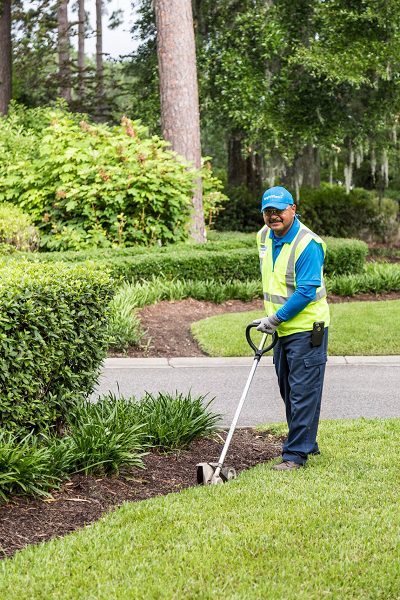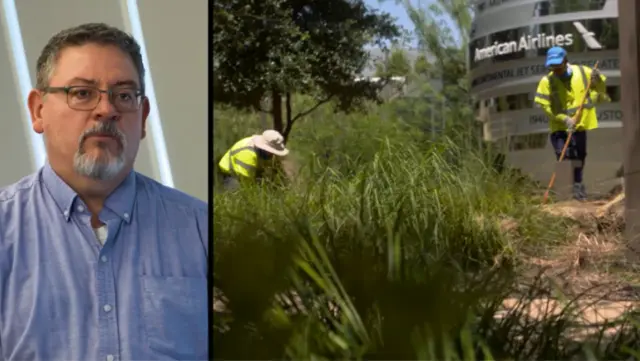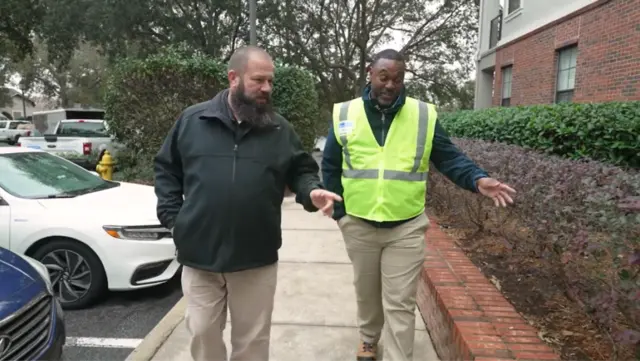
Choose Your Landscape Partner Wisely
Here’s How to Find the Right Match
Choosing the right landscaper takes time, which likely isn’t something you have in abundance. Instead of turning your search into a process akin to speed dating, use this cheat sheet instead. We promise it will help you make a choice faster; and better yet, it won’t be one you regret.
Step 1: Check Credentials
Some things about choosing a landscape partner are subjective—such as whether you have a good rapport. Others, like whether they have the right credentials and qualifications, are not. Checking credentials might seem obvious, but making it your first step is the quickest way to narrow the field. And besides, if a landscape professional can’t pass this test, is it really a good idea to have them serve your property? You could be opening yourself up to an untold amount of risk.
So, what should you be looking for? Inquire about:
- Proof of insurance, including workers compensation and liability (ideally $1 million minimum)
- Certifications, such as International Society of Arboriculture for arborists, or LEED for sustainability expertise
- Licenses, according to what’s required by law in your locale. For instance, some states require licensure to apply pesticides or weed killers
Step 2: Ask About Their Crews

Next up, find out how they vet and train their crews. Specifically, you want to ensure each person who sets foot on your property is qualified and will operate safely. Your landscape provider should require their crews pass the following as a condition of their employment:
- Background check
- Drug test
Depending on the state where you’re located, the landscaping company may also be required to use E-Verify, an online system that allows employers to verify an employee’s employment eligibility. At BrightView, we verify all of our new employees with E-Verify.
Finally, ask how they train their crews. Find out whether their training is limited to onboarding, or includes continuing education. For example, BrightView offers a comprehensive onboarding process, and continuing education that develops our crews and helps us retain talented team members. Bottom line-- training helps ensure consistent quality. You want a partner who’s willing to invest in that.
Step 3: Evaluate Quality
Speaking of quality, let’s talk about how your landscape partner will maintain the quality of your relationship. Now is the time to find out who will be your day-to-day point of contact. That person, likely an Account Manager, should be clearly designated, as should the process for contacting them. Also, ask what the protocol is for when your Account Manager is unavailable. Conversely, if you’re out of the office or have others who may be involved in landscape decision making, you want it to be easy for them to know who to contact. Recognizing that HOA communities are one such instance where multiple people need to stay in the loop on their landscape maintenance, we at BrightView developed a solution called HOA Connect. It’s a secure, personalized portal where property managers, homeowner association board members, and residents can submit and track landscape requests and see announcements related to their landscaping services.
Here are some other ways to get a sense of a landscaper’s quality, both in service and their ability to be a good partner:
- Don’t just look at price. Cheapest isn’t always the best. A good landscape provider can work with you to create a cost-efficient maintenance plan, but they won’t be willing to cut corners. Experience tells them that skimping on essentials, like weed and pest management or tree care, can cause bigger problems down the line that will negate any savings.
- Ask for references, including ones for properties similar to yours. Don’t be shy about calling the references to pick their brain about what it’s like to work with the company you’re considering. You may even want to do a drive-by of their property to see it for yourself.
Finally, don’t just think about your current needs; think about what your needs may be down the line. Select a partner who has the capability to serve your property as it evolves. Find out what other capabilities your partner has—including tree care, irrigation, enhancements, renovation, and design. A partner with comprehensive capabilities can streamline your landscape services and think strategically about the bigger picture for your property. More than just “mow, blow and go” a good partner for the long-term will be proactive, identifying potential risks and suggesting ways to mitigate them; as well as identifying opportunities to improve your property value by enhancing your outdoor environment.
Simply put, they should work hard to make your life easier and make you look good. Now that’s what you call a keeper.



